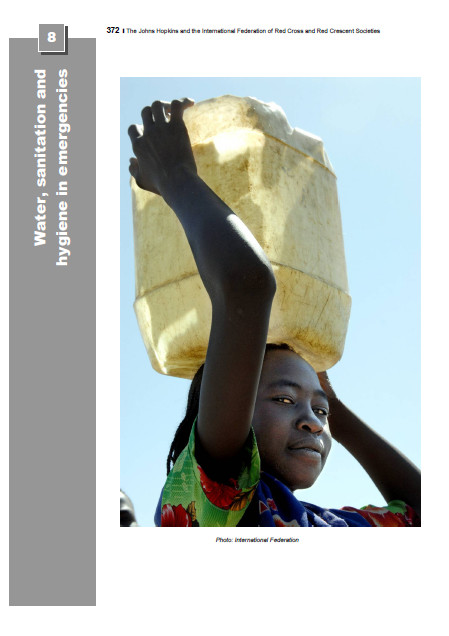Public health guide in emergencies: Water, sanitation and hygiene in emergencies
 |
guide Jan 2008 ; 70 pages
Aut.
Ed. CICR - Genève JHSPH - Baltimore - 2 édition
Téléchargeable sous format: PdF
Téléchargeable chez l'éditeur
Résumé:
La totalité de l'ouvrage (603 pages) est téléchargeable sur www.jhsph.edu/research/centers-and-institutes/center-for-refugee-and-disaster-response/publications_tools/publications/_CRDR_ICRC_Public_Health_Guide_Book/Forward.pdf Abstract:
Description: This chapter discusses the importance of improving water, sanitation, vector control and hygiene in emergency settings.
Learning objectives:
- To explain the relationship between the environment and water, sanitation and hygiene related diseases;
- To present standards and key indicators related water supply, sanitation and hygiene in emergencies;
- To provide basic information about control measures for improving environmental conditions;
- To discuss the importance of addressing long term needs of the community at the onset of the emergency and throughout its duration. Contents:
Introduction .373
Diseases related to water, sanitation and hygiene .375
Community involvement in disease prevention .380
Improving environmental conditions.384
Excreta disposal.389
Water quantity .395
Water quality .398
Hygiene .404
Food safety .409
Vector control.411
Solid waste management .427
Drainage .431
Planning guidelines for institutions .433
Water and sanitation in cholera outbreak response .434
Mots clefs: |
accès à l'assainissement (CI) (DT) (OP) (ope) , accès à l'eau (CI) (DT) (OP) (ope) , catastrophe naturelle (CI) (DT) (OP) (ope) |
Editeurs/Diffuseurs: |
|
CICR
-
Comité international de la Croix Rouge - Genève - Suisse |
JHSPH
-
Johns Hopkins Bloomberg School of Public Health - Baltimore - Etats Unis |
En cas de lien brisé, nous le mentionner à communication@pseau.org